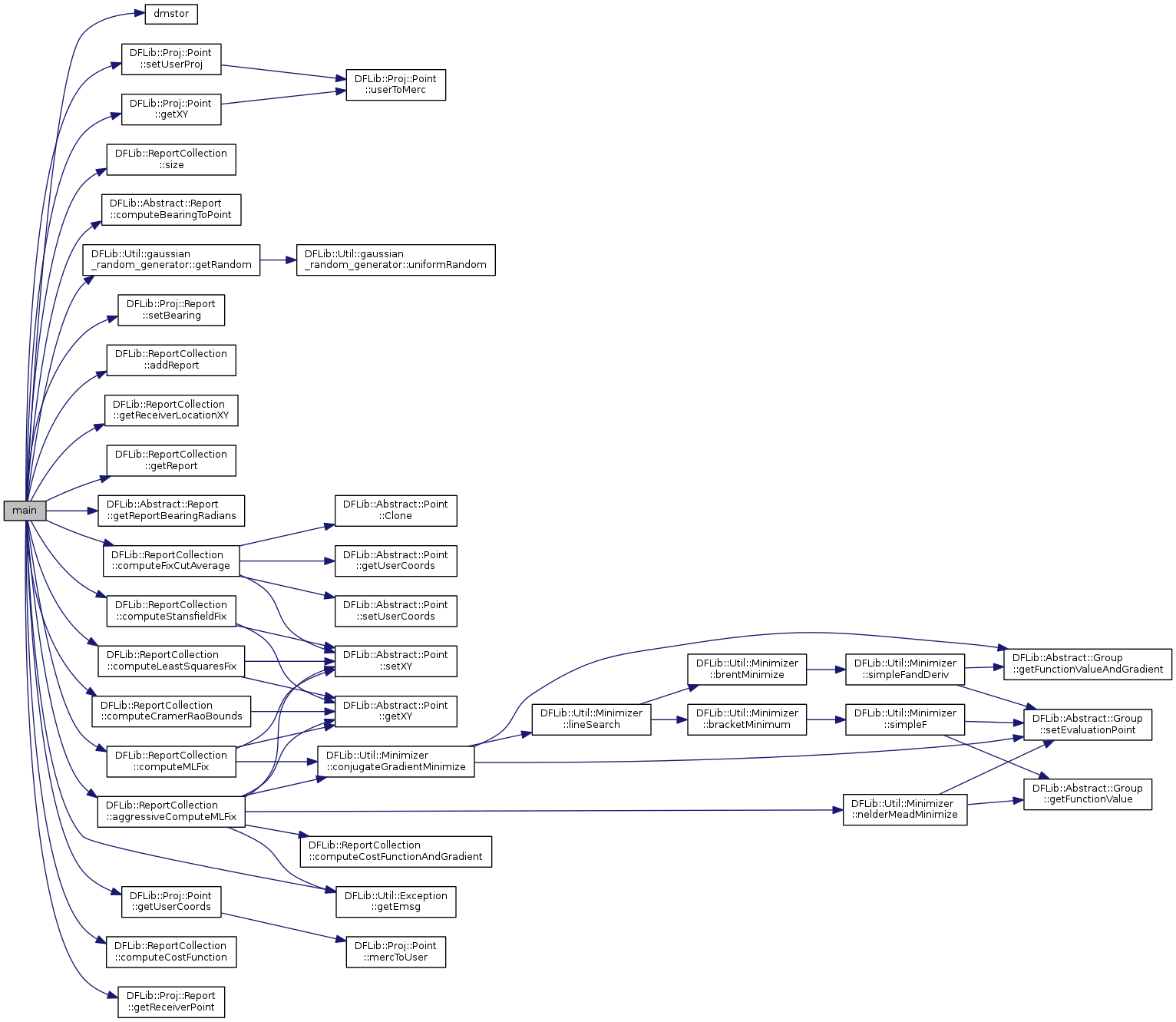#include <cmath>#include <iostream>#include <sstream>#include <fstream>#include <vector>#include <proj_api.h>#include "Util_Misc.hpp"#include "gaussian_random.hpp"#include "DF_Proj_Point.hpp"#include "DF_Report_Collection.hpp"#include "DF_Proj_Report.hpp"
Functions | |
| double | dmstor (const char *, char **) |
| int | main (int argc, char **argv) |
Function Documentation
| double dmstor | ( | const char * | , |
| char ** | |||
| ) |

| int main | ( | int | argc, |
| char ** | argv | ||
| ) |
A simple demo program to test out DFLib fixes using the DFLIB::Proj::Report class
testlsDFfix_proj takes a longitude/latitude pair in PROJ.4 format as command line arguments. This coordinate pair represents the actual location of a transmitter. It also takes as standard in a text file of receiver locations with their standard deviations. Several example receivers files are distributed with DFLib.
The program then computes the actual bearings from the given receiver locations to the known transmitter location, and adds random errors to the bearings. The random errors are selected from a Gaussian distribution with the standard deviations given in the receivers file.
From the randomized bearings, the code computes DF fixes using all the methods available in DFLib: the Fix Cut Average, Least Squares (orthogonal vectors), Maximum Likelihood and Stansfield fixes. It outputs a file "testlsDFfix.gnuplot" of Gnuplot commands to plot the DF problem and the various fixes. Error ellipses for the Stansfield solution are also plotted.
The program also outputs a file "testlsDFfix.grasspoints" with the station locations and fix locations in a format that can be read by GRASS GIS's v.in.ascii.
Code to dump out a GeoTIFF file of the Maximum Likelihood method's cost function is commented out with preprocessor "if 0" statements, and requires GDAL. Only the Autoconf build method is currently set up to detect and use GDAL. This stuff is commented out because in at least one version of GDAL it lead to reports of memory access issues from Valgrind. But it can be useful to uncomment it when trying to understand why some geometries of DF problem lead to the Maximum Likelihood and Stansfield fixes failing to converge (one finds that the surface is very flat near the minimum, and the various minimization methods can't do anything but shoot off to infinity).

 1.8.9.1
1.8.9.1